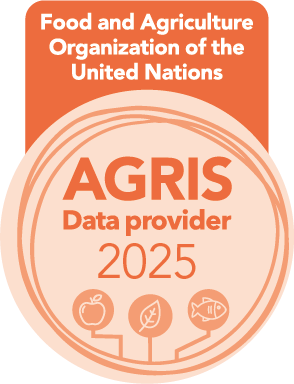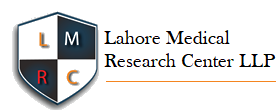Whole Orange Powder as A Rich Source of Polyphenols, Flavonoids and Antioxidants
Orange Powder: Source of Polyphenols, Flavonoids and Antioxidants
DOI:
https://doi.org/10.54393/df.v6i1.164Keywords:
Whole Orange Powder, Polyphenols, Flavonoids, AntioxidantsAbstract
On a global scale, consumers’ faith in dietary therapy for illness remediation has been bolstered by health claims for phytochemical-containing foods, including fruits and vegetables. Thanks to their antioxidant capabilities and chemical variety, polyphenols gave dietary supplements and nutraceuticals new life. Objectives: To investigate the antioxidant activity and phytochemicals (TPC and TFC) of the entire orange powder while extracted in water, ethanol and methanol. Methods: Each extract was tested for its total flavonoid composition using the aluminium chloride technique and its total polyphenolic content using the Folin reagent. The DPPH test was used to measure the antioxidant activity. Results: Results demonstrated that whole orange powder water extract had the lowest total phenolic content values (167.2 ± 3.3 mg GAE/g), flavonoids (35.8 ± 0.2 mg QE/g) whereas methanol extracts displayed the highest values (350.8 ± 6.3mg GAE/g; 72.5 ± 2.2 mg QE/g) and ethanol extracts showed the moderate values (283.4 ± 5.2 mg GAE/g; 57.4 ± 1.8mg QE/g) respectively. At a concentration of 20-100μg/ml, the methanol extract had the greatest antioxidant% inhibition value, 38.50 ± 1.3-87.67 ± 2.4%, followed by the ethanol extract (28.70 ± 1.1-65.40 ± 2.1%) whereas the water extract had the lowest antioxidant% inhibition value, 17.95±0.3-52.25 ± 1.6% and it showed a statistically significant difference values (p<0.05) among the extracts. Conclusions: It was concluded that the antioxidant levels, polyphenols and flavonoids in whole orange powder were strongly affected by the solvent type employed for extraction, with methanol being the solvent of choice.
References
Psakis G, Lia F, Valdramidis VP, Gatt R. Exploring Hydrodynamic Cavitation for Citrus Waste Valorization in Malta: From Beverage Enhancement to Potato Sprouting Suppression and Water Remediation. Frontiers in Chemistry. 2024 May; 12: 1411727. doi: 10.3389/fchem.2024.1411727.
Mahato N, Sinha M, Sharma K, Koteswararao R, Cho MH. Modern Extraction and Purification Techniques for Obtaining High-Purity Food-Grade Bioactive Compounds and Value-Added Co-Products from Citrus Wastes. Foods. 2019 Oct; 8(11): 523. doi: 10.3390/foods8110523.
Hayat A, Haque EU, Nasir M, Nawaz R, Mahmood T, Afzaal S. Comparison and Evaluation of Physico-Chemical Properties of Five Orange Varieties Under Agro-Climatic Conditions of Sargodha, Pakistan. Pakistan. Journal of Innovative Sciences. 2022; 8(2): 236-42. doi: 10.17582/journal.jis/2022/8.2.236.242.
Mueed A, Shibli S, Al-Quwaie DA, Ashkan MF, Alharbi M, Alanazi H et al. Extraction, Characterization of Polyphenols from Certain Medicinal Plants and Evaluation of Their Antioxidant, Antitumor, Antidiabetic, Antimicrobial Properties, and Potential Use in Human Nutrition. Frontiers in Nutrition. 2023 Jun; 10: 1125106. doi: 10.3389/fnut.2023.1125106.
Kainat S, Arshad MS, Khalid W, Zubair Khalid M, Koraqi H, Afzal MF et al. Sustainable Novel Extraction of Bioactive Compounds from Fruits and Vegetables Waste for Functional Foods: A Review. International Journal of Food Properties. 2022 Dec; 25(1): 2457-76. doi: 10.1080/10942912.2022.2144884.
Rani V, Sangwan V, Malik P. Orange Peel Powder: A Potent Source of Fiber and Antioxidants for Functional Biscuits. International Journal of Current Microbiology and Applied Sciences. 2020; 9(9): 1319-25. doi: 10.20546/ijcmas.2020.909.167.
Mojo T, Sutrisno S, Marfuah S. Chemical Content and Pharmacology of Sweet Orange (Citrus sinensis) Fruit Peel: A Review. In E3S Web of Conferences. 2024; 481: 06002. doi: 10.1051/e3sconf/202448106002.
Omoba OS, Obafaye RO, Salawu SO, Boligon AA, Athayde ML. HPLC-DAD Phenolic Characterization and Antioxidant Activities of Ripe and Unripe Sweet Orange Peels. Antioxidants. 2015 Jul; 4(3): 498-512. doi: 10.3390/antiox4030498.
Caponio GR, Annunziato A, Vacca M, Difonzo G, Celano G, Minervini F et al. Nutritional, Antioxidant and Biological Activity Characterization of Orange Peel Flour to Produce Nutraceutical Gluten-Free Muffins. Food and Function. 2024; 15(16): 8459-76. doi: 10.1039/D4FO01395F.
Lucarini M, Durazzo A, Bernini R, Campo M, Vita C, Souto EB et al. Fruit Wastes as A Valuable Source of Value-Added Compounds: A Collaborative Perspective. Molecules. 2021 Oct; 26(21): 6338. doi: 10.3390/molecules26216338.
Sanjaya IP, Chan MT, Sukma D, Buchori A, Putra RP, Nurcholis W. D-Optimal Design Optimization of Solvent Mixture for Flavonoid Extraction from Phalaenopsis Leaves with Antioxidant Activity. Journal of Pharmacy and Bio-Allied Sciences. 2024 Jan; 16(1): 1-7. doi: 10.4103/jpbs.jpbs_372_23.
Rouamba A, Ouedraogo V, Ouédraogo M, Kiendrebeogo M. Antioxidant Effects and Protective Potential of Fruit Extracts of Detarium Microcarpum Against Arsenic Trioxide-Induced Human Lymphocytes DNA Oxidative Damages. Avicenna Journal of Phyto-Medicine. 2025 Jan; 15(1).
Ajeena SJ, Al-Zaidi RM, Hadi MT, Ghazal MM. Study of the Antioxidant Activity of Some Active Compounds in Orange Peels. Cellular and Molecular Biology. 2024 Nov; 70(10): 161-6. doi: 10.14715/cmb/2024.70.10.21.
Shanthi PK, Dhanalakshmi B, Pugazhenthi TR, Samuel Masilamoni Ronald B. Characterization and Antioxidant Activity of Orange Peel Extracts. 2019 Jun.
Singleton VL. Lamuela-Raventos: Analysis of Total Phenols and Other Oxidation Substrates and Antioxidants by Means of Folin-Ciocalteu Reagent. Methods in Enzymology. 1999; 299: 152. doi: 10.1016/S0076-6879(99)99017-1.
Ashraf H, Iahtisham-Ul-Haq, Butt MS, Nayik GA, Ramniwas S, Damto T et al. Phytochemical and Antioxidant Profile of Citrus Peel Extracts about Different Extraction Parameters. International Journal of Food Properties. 2024 Dec; 27(1): 286-99. doi: 10.1080/10942912.2024.2304274.
Azman NF, Azlan A, Khoo HE, Razman MR. Antioxidant Properties of Fresh and Frozen Peels of Citrus Species. Current Research in Nutrition and Food Science Journal. 2019 Aug; 7(2): 331-9. doi: 10.12944/CRNFSJ.7.2.03.
Razola-Díaz MD, De Montijo-Prieto S, Guerra-Hernández EJ, Jiménez-Valera M, Ruiz-Bravo A, Gómez-Caravaca AM et al. Fermentation of Orange Peels by Lactic Acid Bacteria: Impact on Phenolic Composition and Antioxidant Activity. Foods. 2024 Apr; 13(8): 1212. doi: 10.3390/foods13081212.
Tripoli E, La Guardia M, Giammanco S, Di Majo D, Giammanco M. Citrus Flavonoids: Molecular Structure, Biological Activity and Nutritional Properties: A Review. Food Chemistry. 2007 Jan; 104(2): 466-79. doi: 10.1016/j.foodchem.2006.11.054.
Gutiérrez-del-Río I, Fernández J, Lombó F. Plant Nutraceuticals as Antimicrobial Agents in Food Preservation: Terpenoids, Polyphenols and Thiols. International Journal of Antimicrobial Agents. 2018 Sep; 52(3): 309-15. doi: 10.1016/j.ijantimicag.2018.04.024, 04.024
Ogo O, Hembafan N, Amokaha R, Jeremiah O, Inalegwu B. Characterization and Antioxidant Activity of Peel Extracts from Three Varieties of Citrus Sinensis. Heliyon. 2024 Apr; 10(7). doi: 10.1016/j.heliyon.2024.e28456.
Additional Files
Published
How to Cite
Issue
Section
License
Copyright (c) 2025 DIET FACTOR (Journal of Nutritional and Food Sciences)

This work is licensed under a Creative Commons Attribution 4.0 International License.
This is an open-access journal and all the published articles / items are distributed under the terms of the Creative Commons Attribution License, which permits unrestricted use, distribution, and reproduction in any medium, provided the original author and source are credited. For comments












